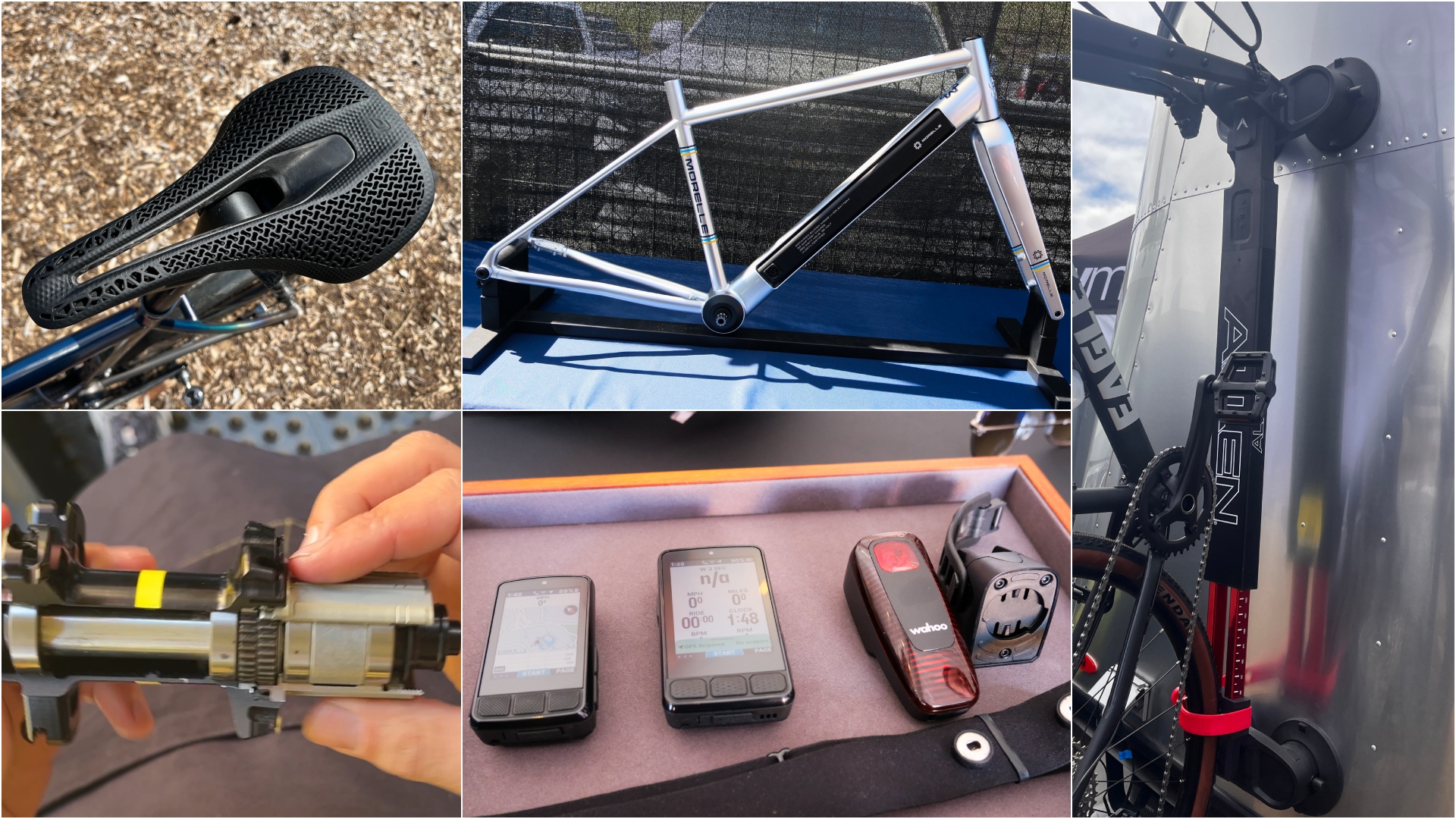
Now in its 35th year, the Sea Otter Classic is North America's largest cycling festival, drawing over 74,000 attendees, more than 1,000 exhibiting brands and hosting 12 amateur and elite races across road and off-road disciplines. Held on and around the Laguna Seca Raceway in Monterey, California, this year’s coverage continues with another tech highlights, written by North American Editor Anne-Marije Rook. Read Tyler Boucher's Part 1 here and don't miss the recap of the opening round of the 2025 Life Time Grand Prix.
I’ve been coming to the Sea Otter Classic on and off for the past 12 years, yet pedaling along 17 Mile Drive, the stunning stretch of road that connects Monterey and Carmel-by-the-Sea, never gets old. This winding, ocean-side road feels like riding through a living postcard. To the west, salty sea air rustles the cypress trees and sweeps across patches of purple wildflowers clinging to the rugged cliffs while waves crash violently below. To the east, meticulously kept golf courses give way to quiet forests and luxury estates. Seagulls cry overhead, and as you roll through Pacific Grove, deer often wander across the path. Strava tells me I’ve ridden this route 17 times already, and still, I look forward to it every single year.
This year’s trip to North America’s biggest bike expo was brief and a bit of a whirlwind, but I still found a way to justify hauling my bike: an early morning ride along 17 Mile Drive and up to the venue with the good folks from CADEX, who had just outfitted my bike with their latest saddle—more on that below. My time at the show was packed with backroom meetings and sneak peeks at exciting products on the horizon (the first big launch drops this Wednesday!), but it left me with little opportunity to explore the sunny show floor in depth. Still, I did manage to spot a few standout pieces of gear that I can talk about now. Here’s a quick roundup of some of the neatest things I came across.
An e-bike that takes just 15 minutes to charge
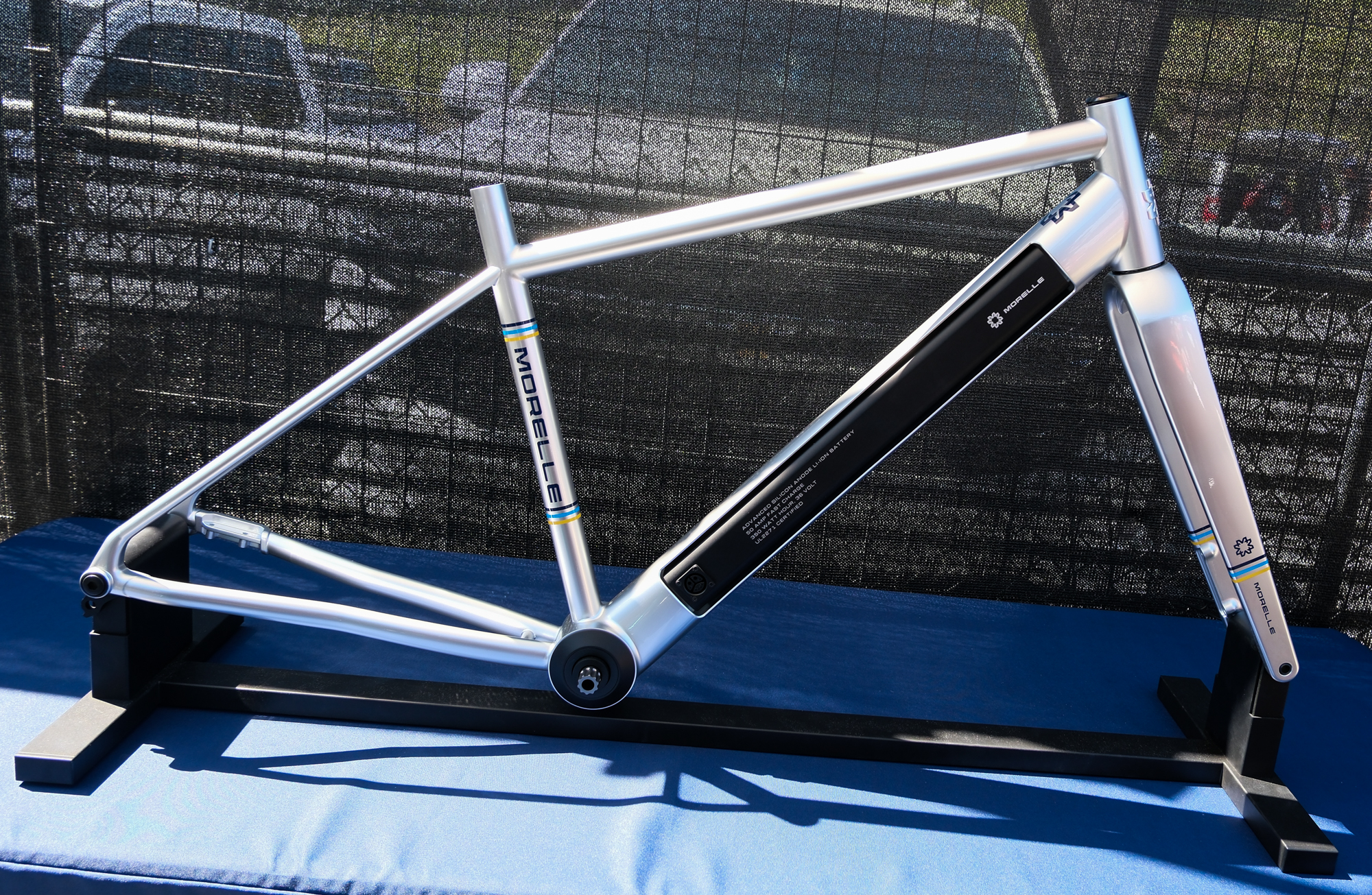
In a media-only booth hosted by PR firm Echos Communications, we got an early look at Gary Fisher’s long-awaited e-bike brand, Morelle.
The company aims to revolutionize urban cycling with a battery unlike anything currently on the market. Morelle bikes are built around Ionblox’s high-density, silicon-based batteries, which are lighter and charge faster than traditional lithium-ion packs. The 350Wh batteries in Morelle’s first model will carry you for up to 30 miles and will reportedly charge from empty to full in just 15 minutes using a standard outlet.
The debut model will be a flat-bar aluminum commuter bike featuring SRAM electronic shifting and a compact, high-torque mid-drive motor—rumored to be from Bafang. The full build is expected to weigh around 25 pounds, making it one of the lightest in its class. It will retail for near $3,000.
Morelle is currently accepting advance orders, with deliveries expected in early 2026.
CADEX 3D AMP Saddle
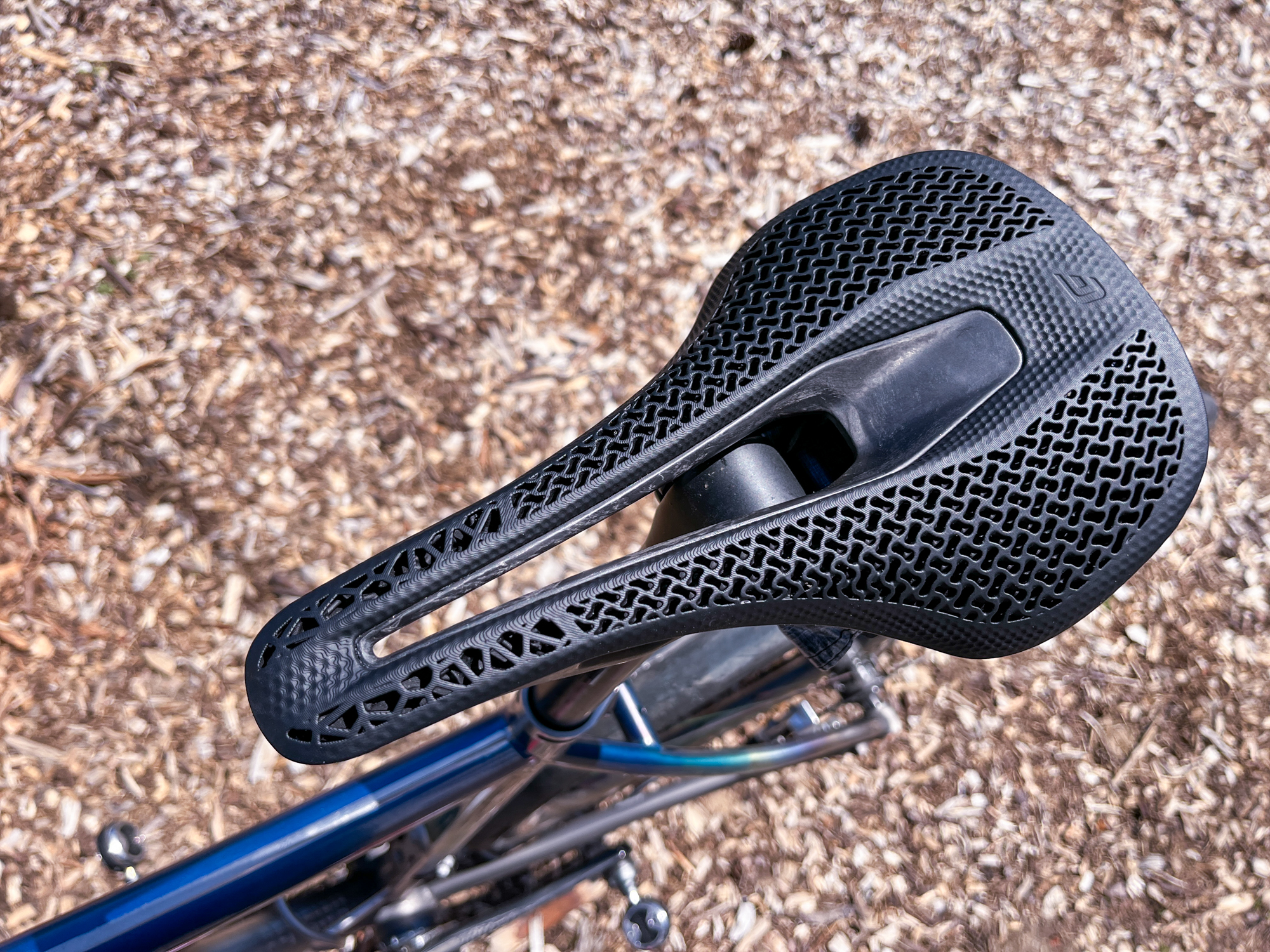
I am a big fan of the Cadex amp saddle. I first switched to the Amp saddle after needing a break from my trusty Egon seat following a grueling 350-mile Unbound XL ride in 2023. What started as a temporary fix quickly became my go-to.
The AMP was initially created to offer a versatile, short-nosed saddle for a broad user base as opposed to its Boost saddle, which is made specifically to accommodate an aggressive riding position. After a year and a half of using the Amp, I’ve found that it delivers great comfort across a wide variety of terrain and ride lengths—all in a featherlight, performance-focused package.
Now, the newly released Amp 3D retains the same shape and ultralight carbon base but replaces the high-elasticity “Particle Flow” padding with a 3D-printed gyroid structure. This G3D padding is designed to adapt to a rider’s movement for targeted support. The padding uses variable densities across key pressure zones for optimal support and better weight distribution. At 146g, it’s slightly heavier than the original Amp, but I’m eager to put it to the test and see how it stacks up.
Mavic's Hub Silencer
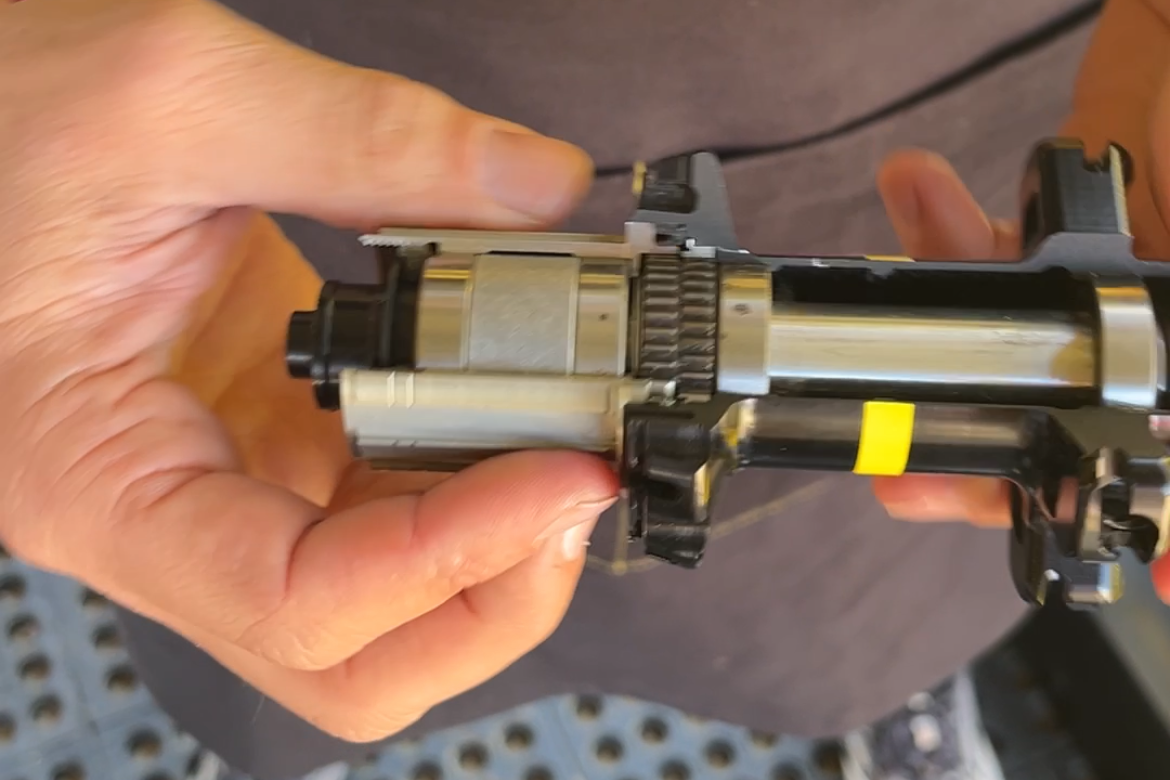
In the Mavic tent, I was shown the latest and greatest in its tubeless and tapeless technology but it was old tech that really impressed. I learned, perhaps a tad late, that all modern ratchet-style Mavic hubs have a removable silencer. It’s a simple ring that sits behind the ratchets.
Posted by CyclingWeekly on
Personally, I like my hubs to have a soft and pleasant buzz or be as close to silent as possible. But if you like a loud and bell-negating hub, you can simply remove the silencer by taking off the freehub body, followed by the spring and the ratchet mechanism. The silencer sits inside the last ratchet ring. Simply remove the ring and assemble the hub. The whole process takes less than 30 seconds.
While some wheel brands recommend dampening the hubs by packing the hubs with thick grease, the Mavic way is a very neat and clean solution.
Wahoo’s latest
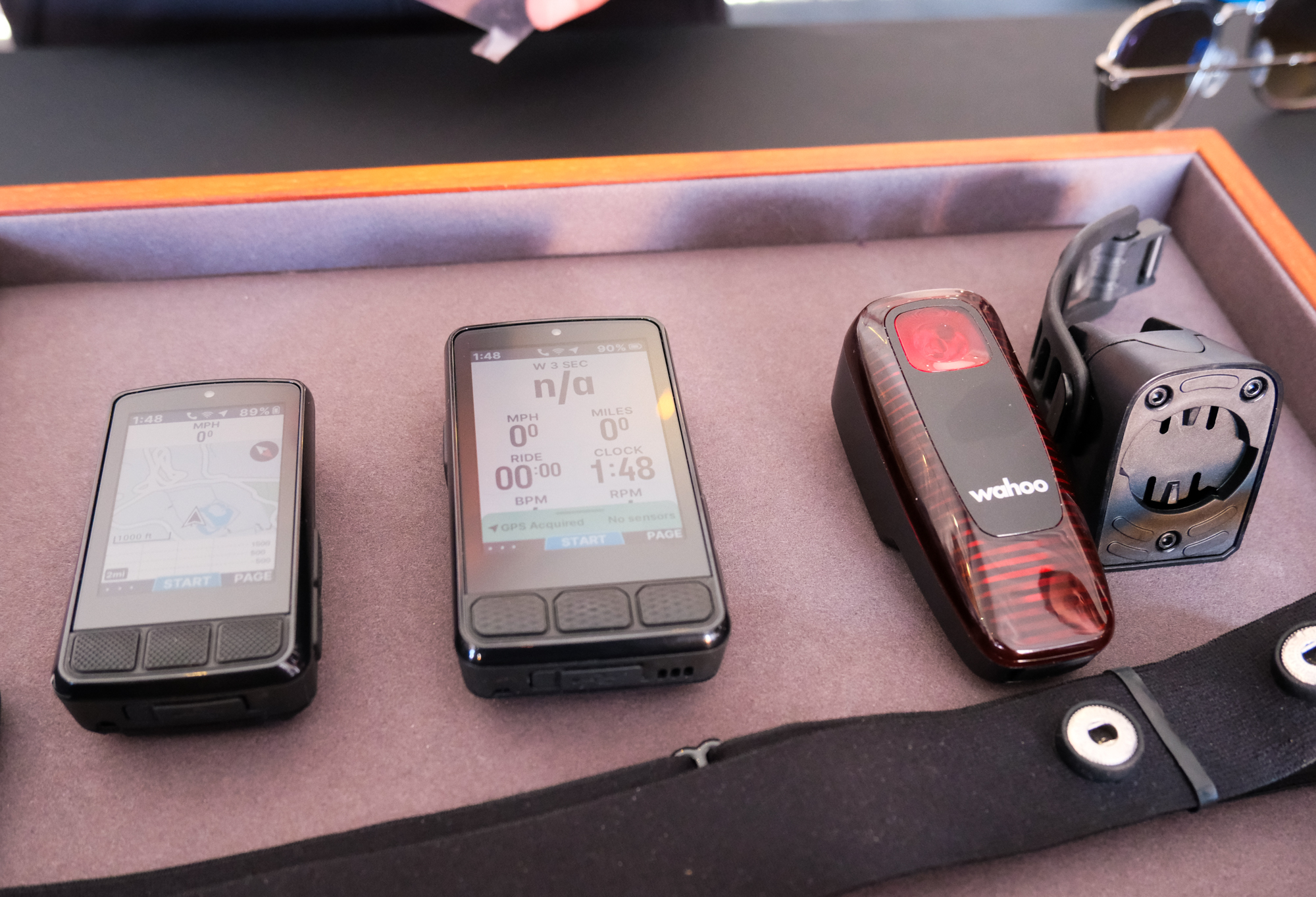
During Sea Otter week, Wahoo released the latest generation of its Bolt and Roam computers as well as a radar rear light.
The computers have undergone a redesign inside and out, and fortunately, unlike the new ACE, they remain compact. The new computers are available starting May 6th. What’s new:
ELEMNT ROAM 3 is a feature-rich, mid-size computer made for adventurers. New features include glove-friendly multi-touch capabilities (pinch, zoom, swipe), a high-resolution and large anti-glare screen, and enhanced navigation and route management. The latter includes detailed maps with points of interest, elevation data and road types, and voice turn-by-turn directions. It also boasts a 25-hour battery life.
ELEMNT BOLT 3 is the smallest and lightest of Wahoo’s cycling computer line-up. It’s meant to offer aerodynamics and precision for performance-focused riders, paired with entry-level pricing and simplicity of use for those new to cycling computers. The newest generation has a larger, high-contrast 2.3” display for crisp readability at any speed and in all conditions. It has increased its compatibility with more third-party apps and services, features Wahoo’s new Ride to Ride dashboard, and has a battery life of up to 20 hours.
TRACKR RADAR: Wahoo’s first entry into radar technology. Like the Garmin Varia or Trek Carback, this rear light provides vehicle detection and visibility, and even acts like a brake light. Features:
- Vehicle warning: the radar system detects approaching cars behind, increasing the flash pattern
- Brake light: a built-in accelerometer allows the unit to function as a brake light, getting brighter when slowing down
- Compatibility: the TRACKR will connect and integrate with most Bluetooth or ANT+ bike computers on the market, not just Wahoo’s ecosystem.
- Battery extender: When no vehicles are detected, the unit will reduce its luminosity to conserve battery power and can provide up to 20 hours of use.
A bike rack with an app?
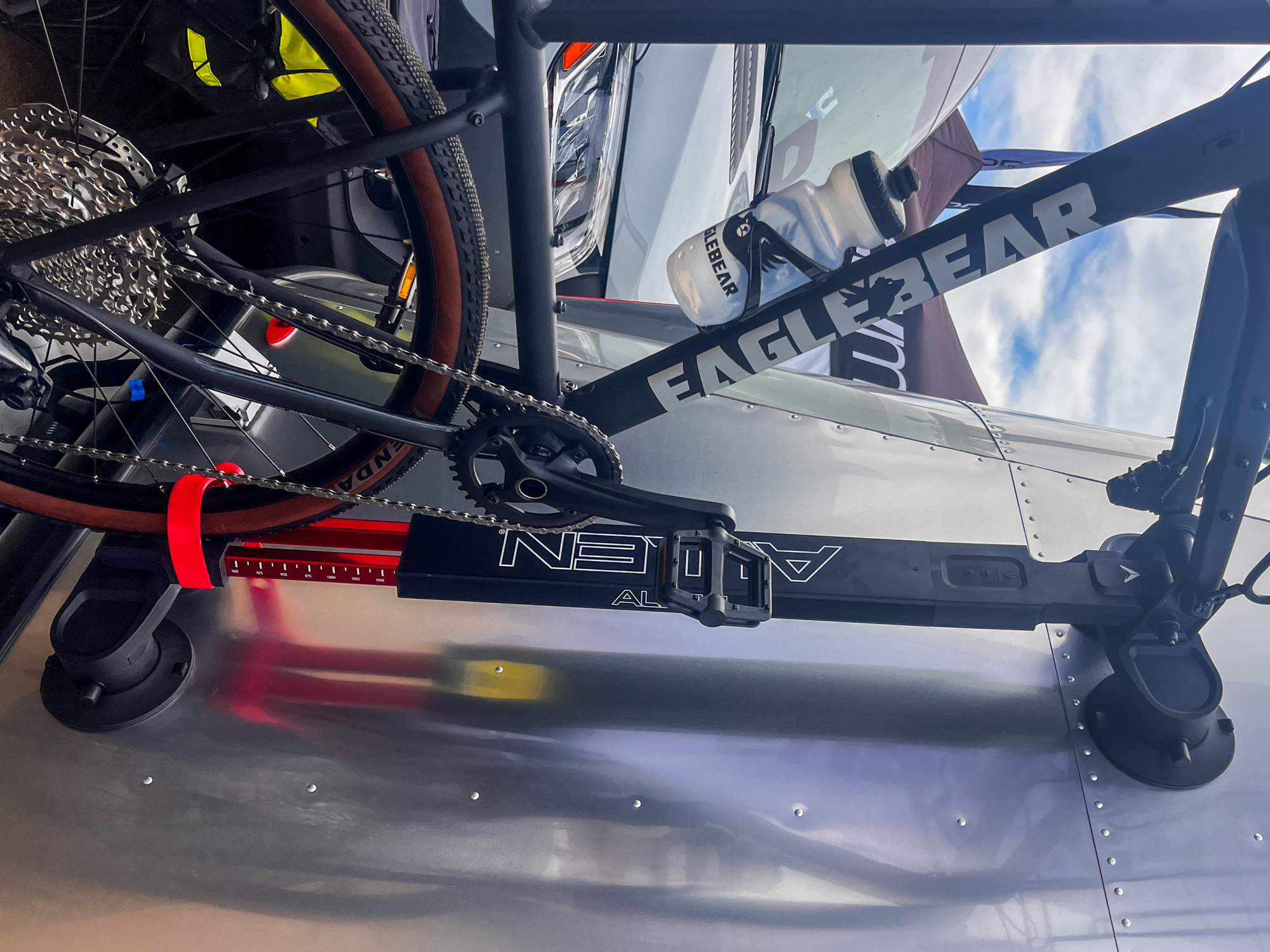
Once known for its inexpensive and easy-to-use trunk racks, Allen Racks has been steadily expanding its lineup with more premium hitch-mounted options—and now, it's diving headfirst into both the suction-mount and “smart” categories with its $700 Smart Suction Bike Rack.
SeaSucker has long used vacuum-based systems for vehicle-mounted bike transport but what sets the Allen Smart Suction Bike Rack apart is a more substantial build and the integration of Bluetooth-enabled sensors.
Yes, you’re going to have to download yet another app but in this case, it might actually be worth it.
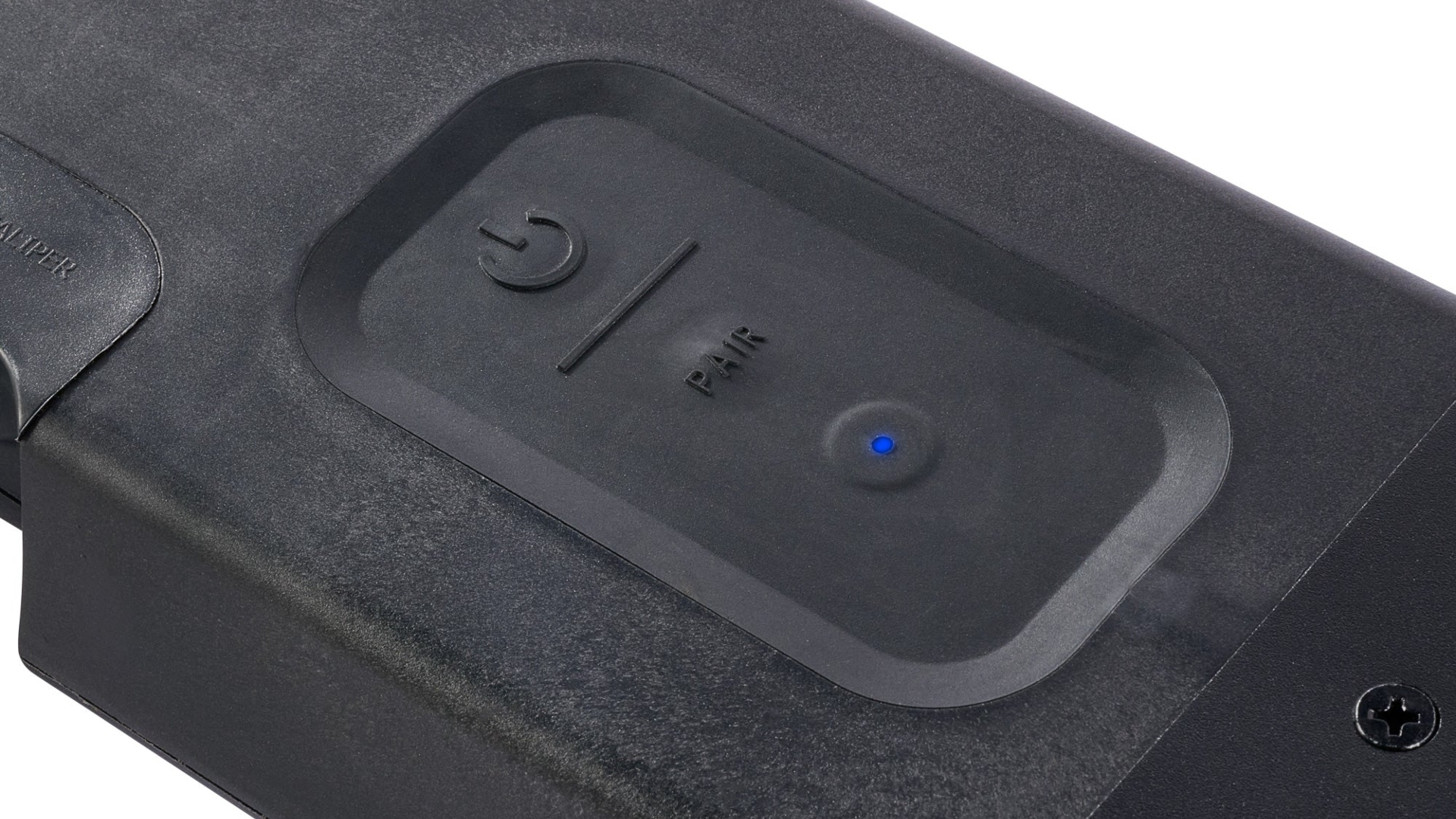
The app pairs with the rack’s built-in sensors to actively monitor suction pressure at each mounting point, giving you the ease of mind of knowing the rack –and your bike attached to it– isn’t going anywhere.
The rack can be mounted to roof or rear of a wide range of cars and RVs (though, sadly, not my pickup truck or Honda Element) and will hold bikes up to 35lbs. There’s an adjustable tray for different wheelbase lengths, and it works with both quick-release and thru-axle forks. A built-in locking cable adds a bit of theft protection.
The Allen Racks Smart Suction Bike Rack is currently on pre-sale.







